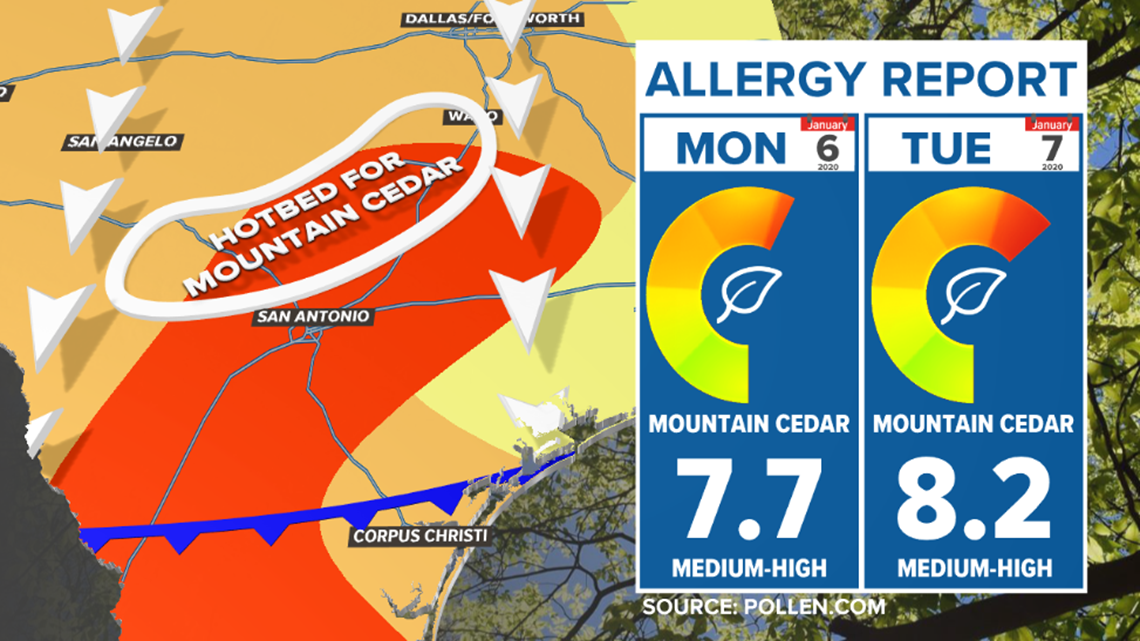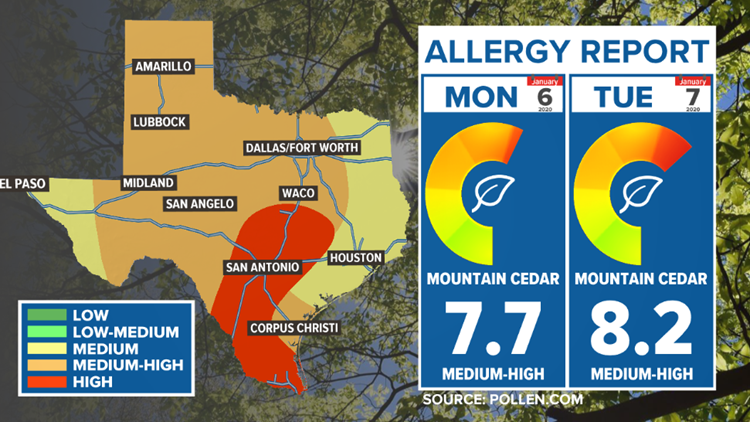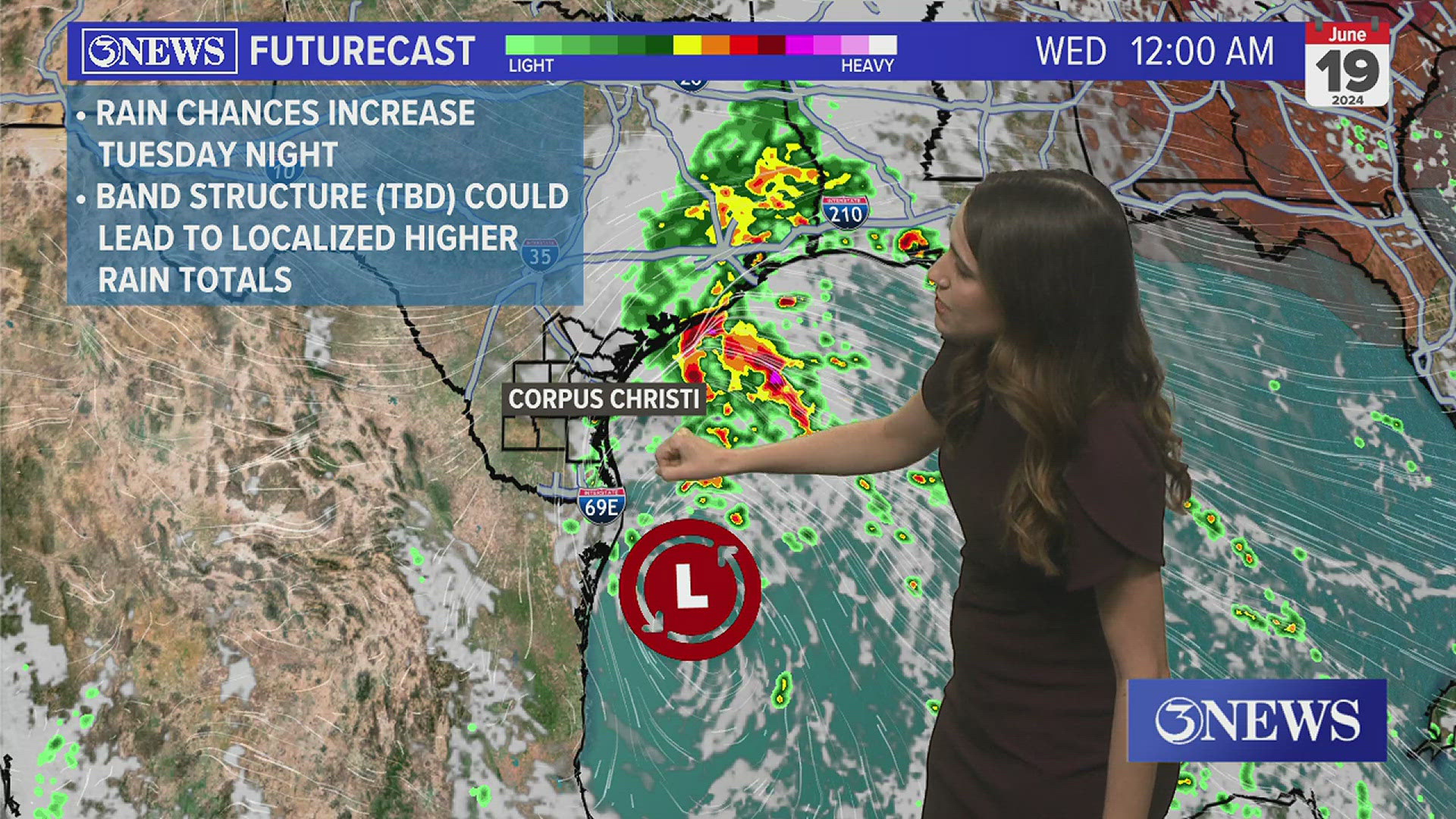CORPUS CHRISTI, Texas — It happens every year. Your nose gets runny, your throat itches, your eyes water. You take your temperature, knowing you're going to see triple digits pop up and you'll stay home from work or school for the day. You check the thermometer. It reads 98.9. What gives?? Why do you feel like never seeing the light of day, but your body temperature is a-ok? This time of year, look to the Texas Hill Country for the answer....


Every year, between mid-December and mid-February, a concentration of ashe juniper trees in the Texas Hill Country pollinate. About the same time, cold fronts are becoming a regular occurrence in South Central Texas, with fronts arriving almost on a weekly basis in the Coastal Bend. In fact, the medium-high levels of mountain cedar in the Coastal Bend will rise a little by Tuesday thanks to the arrival of a weak cold front early Tuesday morning.
The pollen coming off of the junipers (mountain cedar) is transported along the north winds behind cold fronts. While the Coastal Bend is not as mountain cedar ridden as our friends in San Antonio and Austin when it comes to how high levels can climb, it still finds its way South Texas, making some of us sick.
Taking allergy pills/meds can help combat some of the symptoms of mountain cedar if you take them regularly. My dad swears by his nasal spray and says that if you use it daily at the beginning of cedar season (early December) you can escape without catching cedar fever; he lives in San Antonio.



